Termites are notorious for the destruction they can cause to homes and other wooden structures. Homeowners and property managers are on a constant lookout for effective methods to exterminate these pesky invaders. One popular insecticide that comes to mind when dealing with pests is permethrin, which raises the question – can permethrin kill termites?
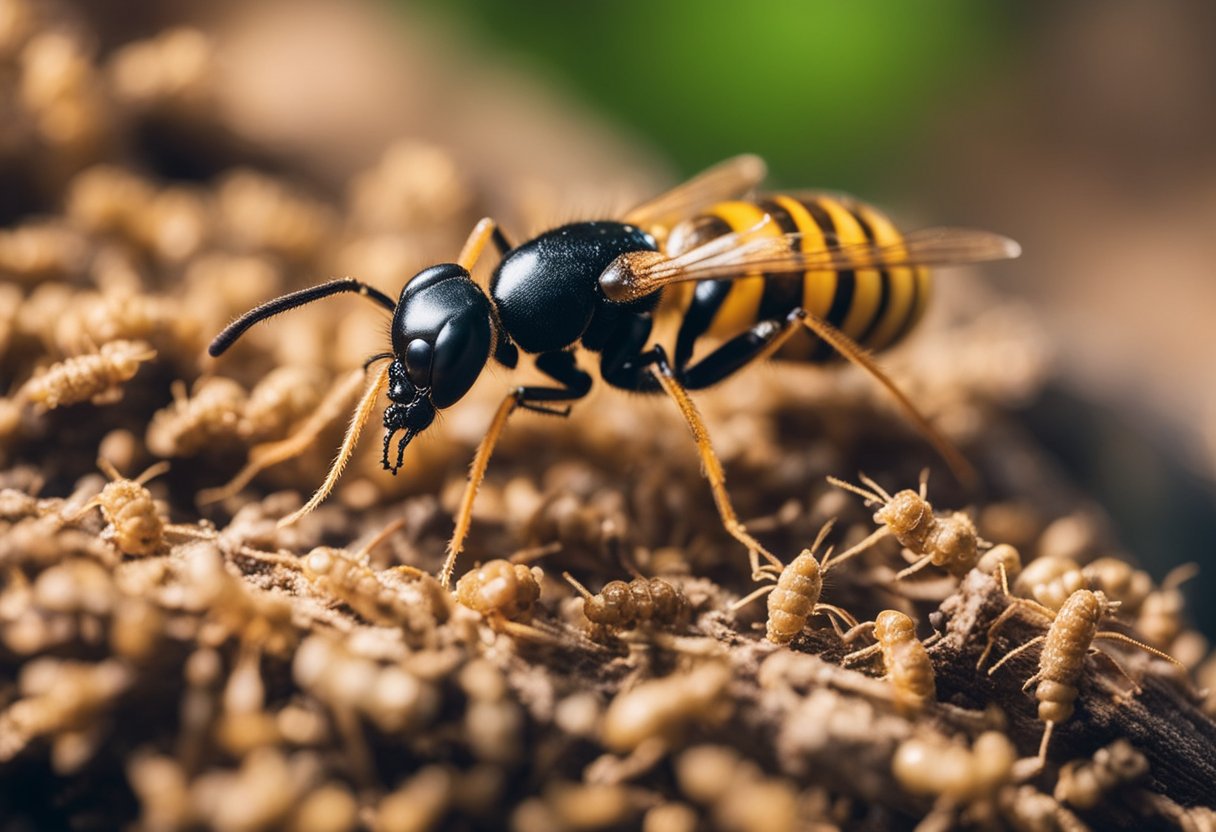
Permethrin is a synthetic chemical commonly used in the control of various household pests, such as cockroaches, ants, and mosquitoes. It is widely recognized for its effectiveness and safety when used as directed. As a result, the possibility of using permethrin to battle termites piques the interest of those seeking efficient solutions for termite infestations.
In order to determine if permethrin can effectively exterminate termites, it is crucial to gain a deeper understanding of the properties and potency of this insecticide. It is also beneficial to explore its practical applications and how it compares to other termite control methods.
Key Takeaways
- Permethrin is a synthetic insecticide used for various household pests
- Effectiveness against termites depends on understanding its properties and potency
- Comparing permethrin to other termite control methods helps make informed decisions
Understanding Permethrin and Its Potency
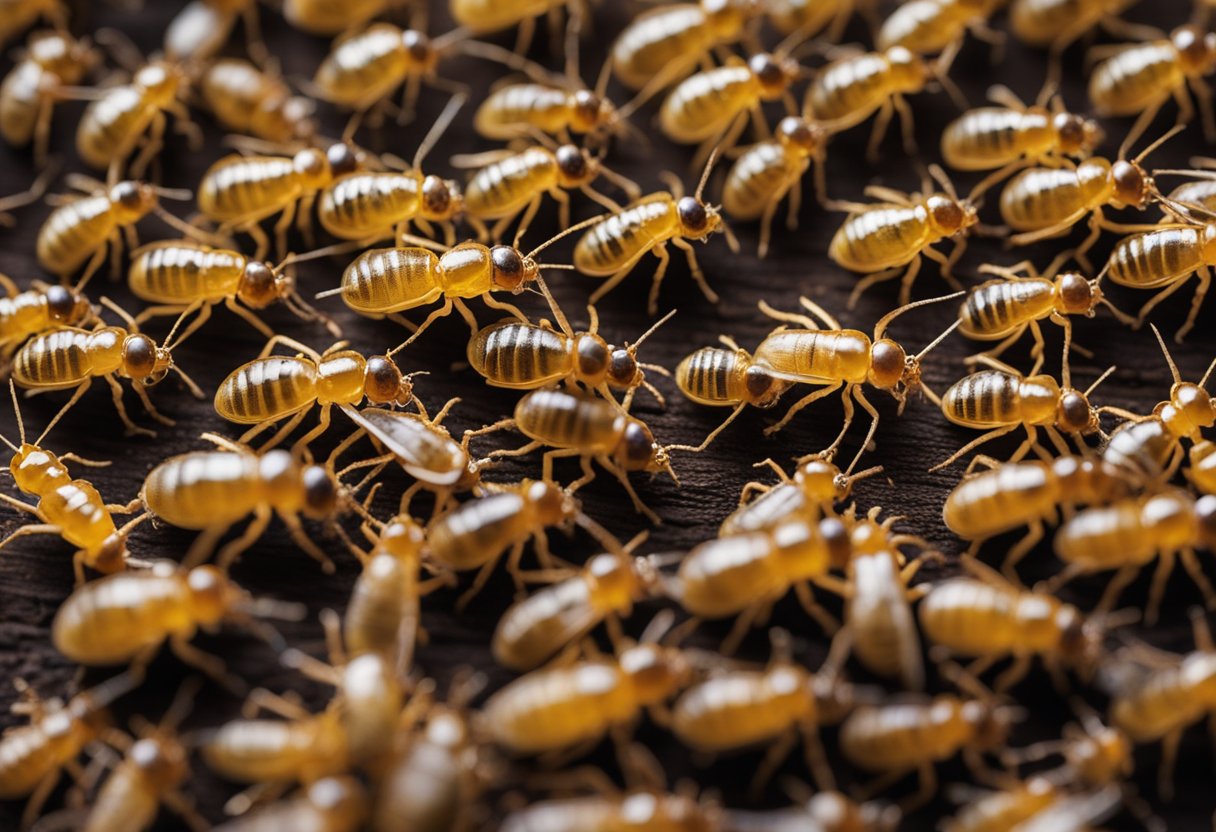
Permethrin is a widely-used insecticide known for its effectiveness in controlling a variety of pests, such as roaches, fleas, and termites. It is a synthetic pyrethroid, a class of insecticides derived from natural pyrethrin compounds found in chrysanthemum flowers. Synthetic pyrethroids, like permethrin, offer enhanced potency and stability compared to their natural counterparts.
As an active ingredient in both treatment products and pest control solutions, permethrin works by targeting the nervous systems of insects. When termites or other pests come into contact with permethrin, their nervous systems become overstimulated, leading to paralysis and eventual death. This mode of action makes it highly toxic to insects while posing minimal risk to humans and pets when used according to label directions.
In the context of termite control, permethrin has proven effective in addressing termite infestations. However, it is essential to mention that other insecticides like bifenthrin, imidacloprid, and methyl salicylate may also be used to tackle these challenges. Each of these active ingredients has its unique properties and features in terms of toxicity and mechanisms of action.
Comparing permethrin to other pyrethroids, it is often considered a middle-of-the-road option in terms of toxicity. On one end of the spectrum, you have pyrethroids like bifenthrin with higher toxicity levels, while on the other end, you’ll find options like pyrethrin with lower toxicity. Choosing the right insecticide for your situation depends on the severity of the infestation, the specific pests you are dealing with, and your preferences regarding toxicity levels.
In conclusion, permethrin is an effective insecticide and a viable option for controlling termite infestations. Though it is toxic to insects, it poses minimal risk to humans and pets when used correctly. As you consider treatment options, keep in mind the various active ingredients available and select the option that best aligns with your needs and specific pest control challenges.
Permethrin Vs. Other Termite Control Methods
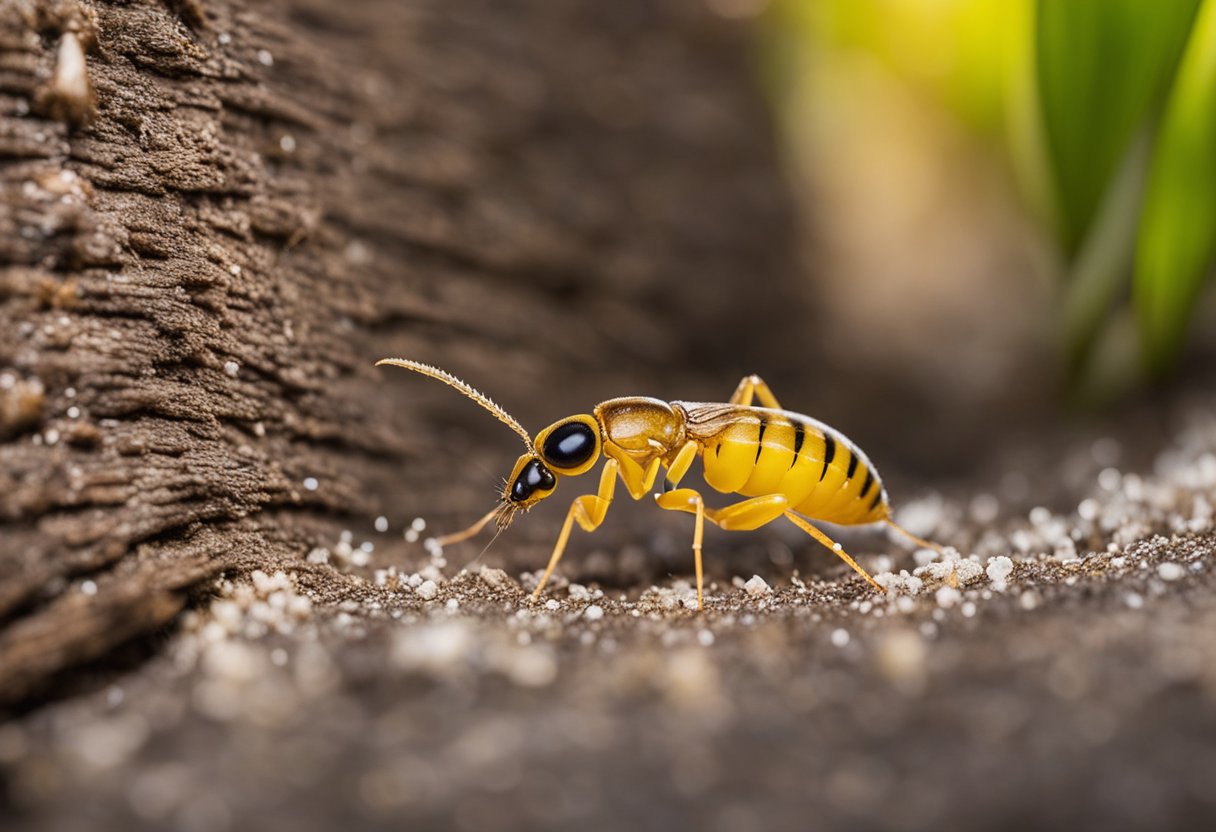
When it comes to protecting your home from termites, you may consider using permethrin as a termite control method. Permethrin is a synthetic pyrethroid pesticide that can be effective in killing termites. However, it is essential to compare its effectiveness with other termite control methods to make an informed decision for your home.
Baiting Systems: Termite baiting systems involve placing bait stations in key locations around your property, and may use active ingredients like hexaflumuron or boric acid. These baits attract termites, and once consumed, the active ingredient disrupts termite growth and development, ultimately killing them. Compared to permethrin, baiting systems are generally considered more eco-friendly, as they use less harmful chemicals and target termites specifically.
Liquid Barrier Treatments: Liquid termiticides like Termidor, containing fipronil, are applied to the soil around your home’s foundation to create a protective barrier against termites. This method is highly effective in preventing termite infestations, and fipronil has been proven to be a compelling agent in killing termites. While permethrin can also be used in this manner, fipronil offers a quicker and longer-lasting solution.
Borates: Borate treatments involve applying a borate-based solution like borax onto wood surfaces to prevent termite infestations. This method works by poisoning the termites when they feed on the treated wood. While effective, borate treatments are not suited to controlling existing infestations. Permethrin, on the other hand, can kill termites directly.
In conclusion, it is essential to evaluate the specific needs of your home and the severity of the termite infestation to determine the most effective control method. While permethrin can be an effective solution, it is important to consider other alternatives like baiting systems, liquid barrier treatments, and borates for a well-rounded termite control strategy.
Practical Application of Permethrin Against Termites
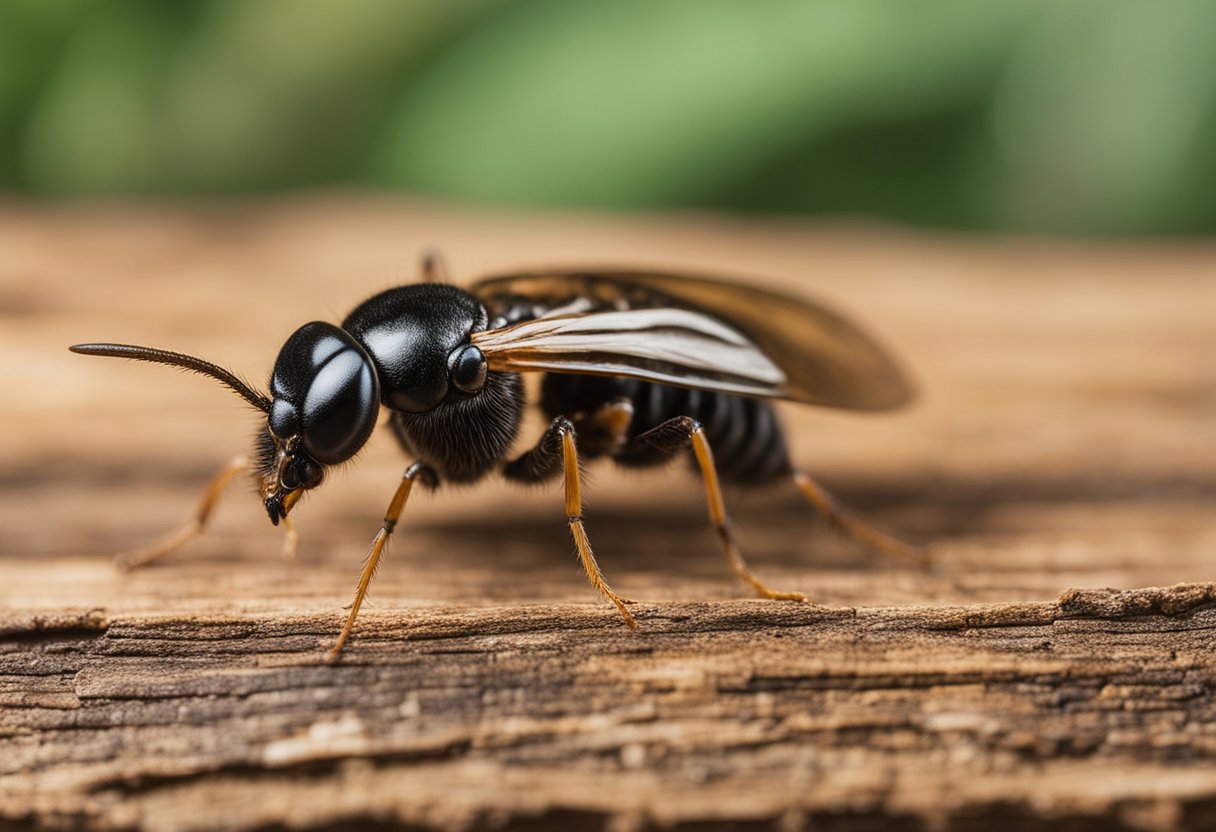
When dealing with a termite infestation, employing chemical treatments is a common and effective approach. One such treatment involves using permethrin, a powerful active ingredient found in many insect sprays. This compound is particularly useful for protecting homes and other structures from subterranean termites.
To begin the treatment process, you need to mix the permethrin solution according to the instructions provided. It can be used as a wood preservative or applied as a spray around the perimeter of the structure. By doing this, you’re creating a protective barrier that prevents termites from accessing your home.
Keep an eye out for mud tubes and look for signs of mastotermes darwiniensis, as these are indicators of termite infestations. If you discover these conditions, address them immediately to prevent further termite damage. Spraying the affected areas with permethrin can help disrupt termite colonies and get rid of termites.
Liquid termiticide, such as permethrin, works effectively against both drywood and subterranean termites, as it targets their primary food source: cellulose. However, complete eradication may require additional methods, such as treated soil to create a trench around the perimeter of your property.
When using permethrin, be aware that it is an odorless treatment, making it an even more convenient choice for homeowners. Apply the treatment to any cracks or vents where termites may enter your home. Regular inspections and maintenance can further ensure that termite infestations remain at bay.
Remember to always follow the safety precautions and instructions provided on the permethrin product label. It is important to handle chemicals responsibly and ensure the protection of your home, loved ones, and the environment.
Frequently Asked Questions on Permethrin Usage
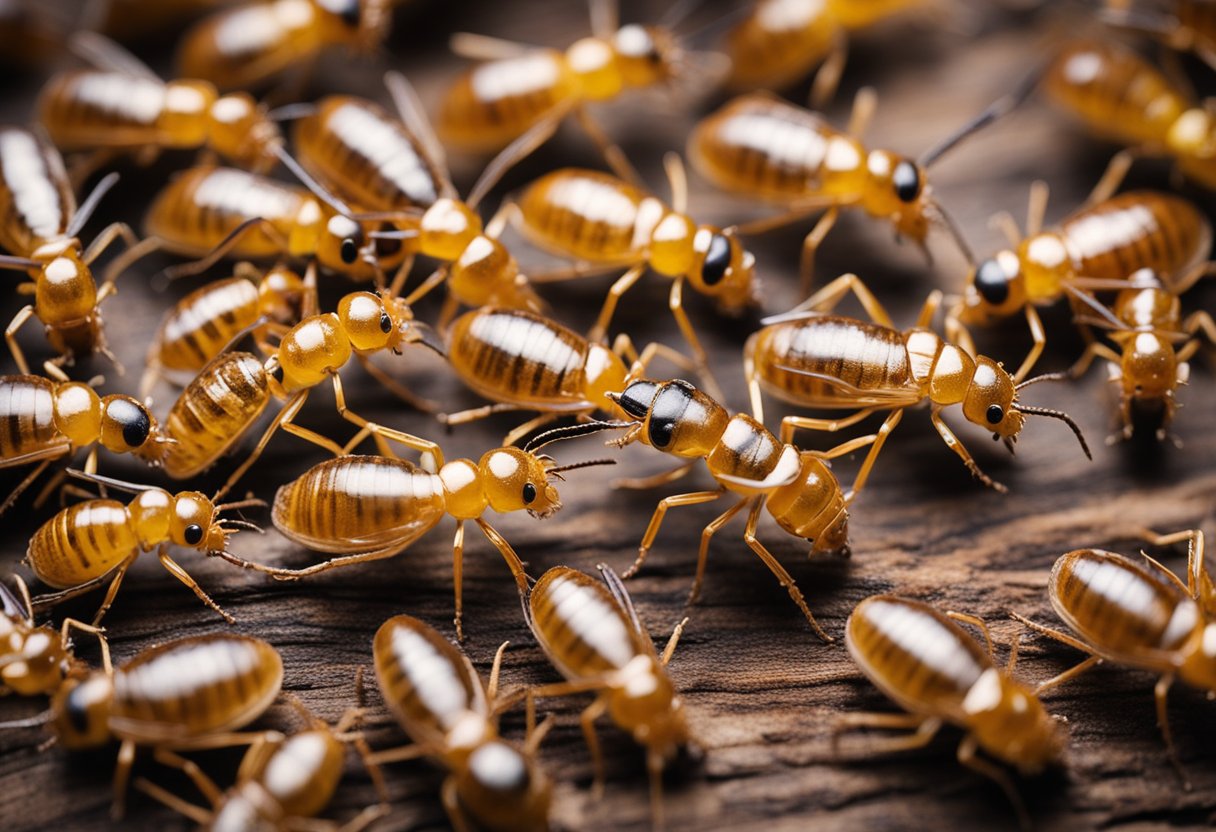
Permethrin is often considered by homeowners as a potential solution for termite control. In this section, we will address some frequently asked questions about its usage.
Is permethrin easy to apply? Yes, permethrin is relatively easy to apply as a liquid termiticide or as a dust. For liquid applications, a 5% solution rate is recommended, while dust applications can be used in tight spaces and crevices where termites reside. Always wear protective gear while applying and follow the manufacturer’s instructions.
How does permethrin compare to alternatives like Taurus SC or Bora-Care? While permethrin can be effective against termites, other termite control options such as Taurus SC (a fipronil-based product) or Bora-Care (a borate-based wood treatment) offer different benefits. Taurus SC provides a long-lasting residual effect, while Bora-Care is a natural insecticide that can penetrate deeper into wood. Assess the pros and cons of each treatment to determine which is most suitable for your specific situation.
How can I tell if permethrin has been effective? One sign of effectiveness is a decrease in termite droppings and discarded wings. With drywood termites, an absence of new wood damage or hollow-sounding wood might also indicate a successful treatment.
Can I use permethrin as a preventive measure? Permethrin can be applied as a preventive measure, but it is not as cost-effective for long-term protection as other methods. Baiting systems or professional pest control services may provide more extensive and long-lasting protection for your home.
Is permethrin safe for use in buildings? Permethrin is generally safe for use in buildings, but it may cause adverse reactions or symptoms in some individuals when directly contacted or inhaled. Be sure to apply the product according to the manufacturer’s guidelines and always wear appropriate protective gear.
How long does the effectiveness of permethrin last? Permethrin has a limited residual effect as it breaks down quickly in sunlight. It is generally more effective when applied as a dust in dark, hidden areas where termites are likely to be present.
Are there non-chemical alternatives to permethrin? Yes, there are several non-chemical alternatives for termite control such as nematodes, which are natural predators of termites, or wintergreen oil, a natural repellent. Additionally, you can consider using physical barriers or bait systems to deter termites from entering your home.
Remember that dealing with a termite infestation can be a complex process. Consulting a pest control professional and considering alternative solutions in addition to permethrin can help ensure the most effective course of action for your specific situation.

